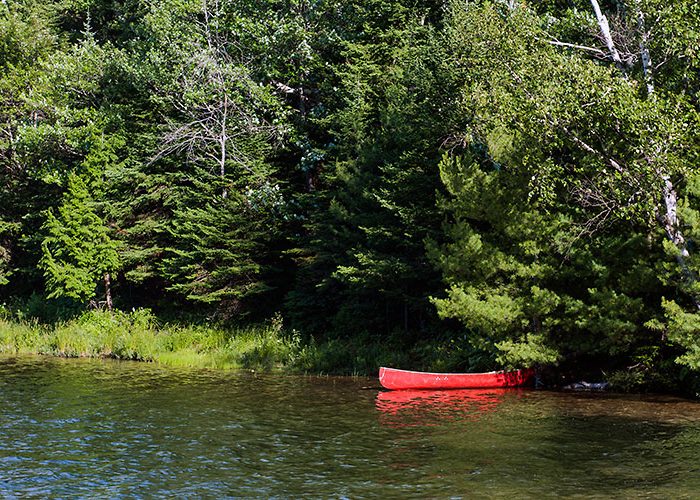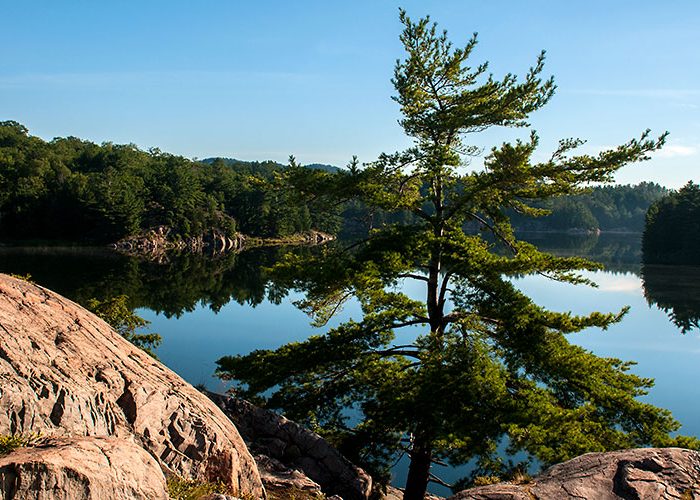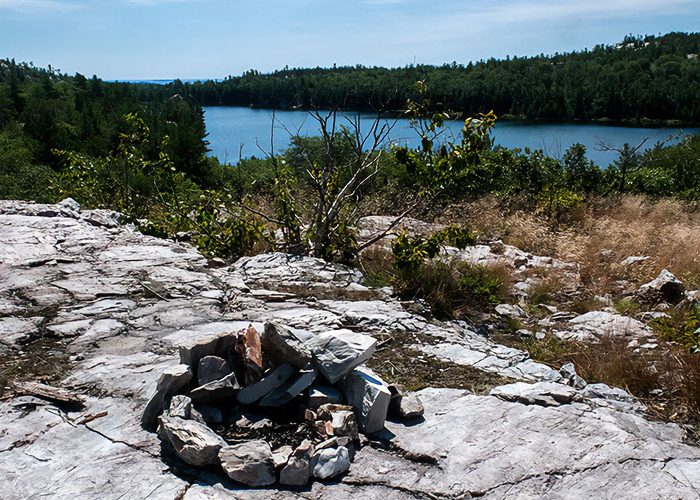Killarney Provincial Park is 645 square kilometres of beautiful, unspoiled wilderness. Located near the wild Georgian Bay Coast. A landscape of picturesque lakes, white and pink rocks, Jack Pine hills and silenced with the call of the loon between the water and the sky. Nights full of stars are calm, with almost no breeze. These are moments you won’t forget!
A landscape that has long attracted hunters, traders and later artists, painters such as The A.Y. Jackson, Franklin Carmichael and A.J. Casson of the Group of Seven. They were instrumental in eventually having the Ontario government declare the landscape a protected area.
In 1959, the Killarney Park area was set aside as a wilderness reserve. In 1962 Highway 637 opened, connecting the north shore of Georgian Bay all the way from the town of Killarney to the Trans-Canada Highway.
Finally in 1964, with the help of lobbying efforts by the Group of Seven, 4,000 square miles (10,000 km²) of the Georgian Bay shoreline were set aside as a wilderness reserve, and Killarney became a provincial park.
Historic Village of Killarney, founded in 1820 as a fur trading post on Georgian Bay is 10 km from the park.
The Killarney post was established on June 28th, 1820, by Etienne Augustin Rocbert de la Morandiere. The village was known as Shebahonaning, an Ojibwe name meaning “canoe passage”. When and why the place name Shebahonaning was changed to Killarney is unknown. With no road access until 1962, water was for many years the only route of travel for its citizens and visitors.
On July 17, 2010 the park officially opened the Killarney Provincial Park Observatory – the first public observatory in any Ontario Provincial Park.
In 2006, the provincial government also created the adjacent but separate provincial park of Killarney Lakelands and Headwaters. In 2015, the Wiikwemkoong First Nation on Manitoulin Island also established the adjacent Point Grondine Park on their own unoccupied heritage territory in the area.
Website Killarney Provincial Park >>




























